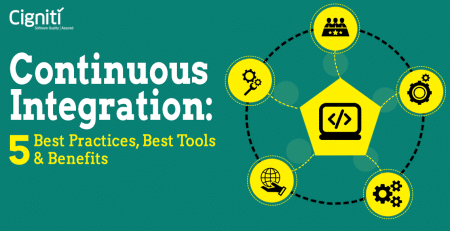5 Approaches for Automating Microservices Testing
Microservices is not a new concept. It has been used by giants such as Amazon, Google, and Facebook for over a decade. When you search for something on Google to retrieve the relevant results, Google calls out to almost 70 microservices.
So, what is a Microservice?
“Microservices” is yet another term added to the already crowded streets of software architecture. The microservice architectural style involves developing single applications that can work together as a suite of small services, each running in its process and communicating with lightweight mechanisms such as an HTTP resource API.
These services require minimum centralized management, use different data storage technologies, and can be written in different programming languages. These services, built around business capabilities, can also be deployed independently by machinery that supports fully automated deployment.
SOA vs. Microservices
The typical Service Oriented Architecture (SOA) model usually has dependent enterprise service buses (ESBs), with microservices using faster messaging mechanisms. While SOA focuses on imperative programming, the microservices architecture uses a programming style that focuses on a responsive actor as its base.
While SOA models usually have an outsized RDBMS, microservices often use databases like NoSQL or micro-SQL connected to conventional databases. That said, the real difference lies in the architecture methods used to create an integrated set of services.
The practices that are used for microservices architecture have been created based on the practices followed by developers for creating software applications for large enterprise organizations.
Developers’ experience comes in handy in understanding the expectations of today’s end users and helps create a consistent yet dynamic experience across a wide range of devices.
Cloud-based applications that are accessible, adaptable, modular, and scalable are in high demand. This has led many developers to change their approach.
What is Microservices Testing?
Microservices testing is a strategic approach to evaluating the individual components of a microservices-based architecture, ensuring their seamless integration and overall system resilience. Microservices test strategy in organizations can drive test automation microservices to optimize the speed and accuracy of their microservices automation testing efforts.
Automated testing microservices with rigorous performance evaluation ensures mission-critical testing microservices applications. By empowering organizations to adopt microservices automation, Cigniti helps clients unlock the full potential of their digital ecosystems.
Testing Microservices
A microservices architecture consists of focused, small services that together create a complete application or task. Every instance of a microservice represents a single responsibility within your application. The real advantage is that these services are independent of one another, which makes them independently deployable and testable.
5 Approaches for Automating Microservices Testing
Let’s look at some approaches for microservices automation testing.
1. Unit Testing
The scope of unit testing is internal to the service. In terms of the volume of tests, they are the largest in number. Unit tests should ideally be automated, depending on the development language and the framework within the service.
2. Contract Testing
Contract testing should treat each service as a black box; all the services must be called independently, and their responses must be verified. Any dependencies of the service must be stubs that allow the service to function but do not interact with any other services.
This helps avoid any complicated behavior caused by external calls and turns the focus on performing the tests on a single service.
A “contract” is how a service call (where a specific result or output is expected for certain inputs) is referred to by consumer-contract testing. Every consumer must receive the same results from a service over time, even if the service changes.
There should be the flexibility to add more functionality as required to the Responses later. However, these additions must not break the service functionality. If the service is designed in this manner, it will stay robust over longer durations, and the consumers will not be required to modify their code to consider the changes made later.
3. Integration Testing
Verification of the services that have been individually tested must be performed. This critical part of microservice architecture testing relies on properly functioning inter-service communications.
Service calls must be made with integration to external services, including error and success cases. Integration testing thus validates that the system works together seamlessly and that the dependencies between the services are present as expected.
4. End-To-End Testing
End-to-end testing verifies that all process flows work correctly, including all service and DB integration. Thorough testing of operations affecting multiple services ensures the system works together and satisfies all requirements. Frameworks like JBehave help automate Functional testing by taking user stories and verifying that the system behaves as expected.
5. UI/Functional Testing
User interface testing is the testing of the highest order as it tests the system as an end-user would use it. Testing of this level must feel like a user trying to interact with the system. All the databases, interfaces, internal and third-party services must work together seamlessly to produce the expected results.
At Cigniti, we cover all the bases and ensure that experts perform effective testing. We ensure the best quality for your product and that your customers are happy. Our tool-agnostic test automation frameworks ensure accelerated testing, giving you higher productivity and an enviable time to market.





Comment (1)
Integration Testing
Verification of the services that have been individually tested must be performed. This critical part of microservice architecture testing relies on the proper functioning of inter-service communications. Service calls must be made with integration to external services, including error and success cases. Integration testing thus validates that the system is working together seamlessly and that the dependencies between the services are present as expected.
This is the scenario in my testing. What best approach can I follow? I have two micro services and while testing one, other does not get started on its own. I Have to start it manually. What should I do?